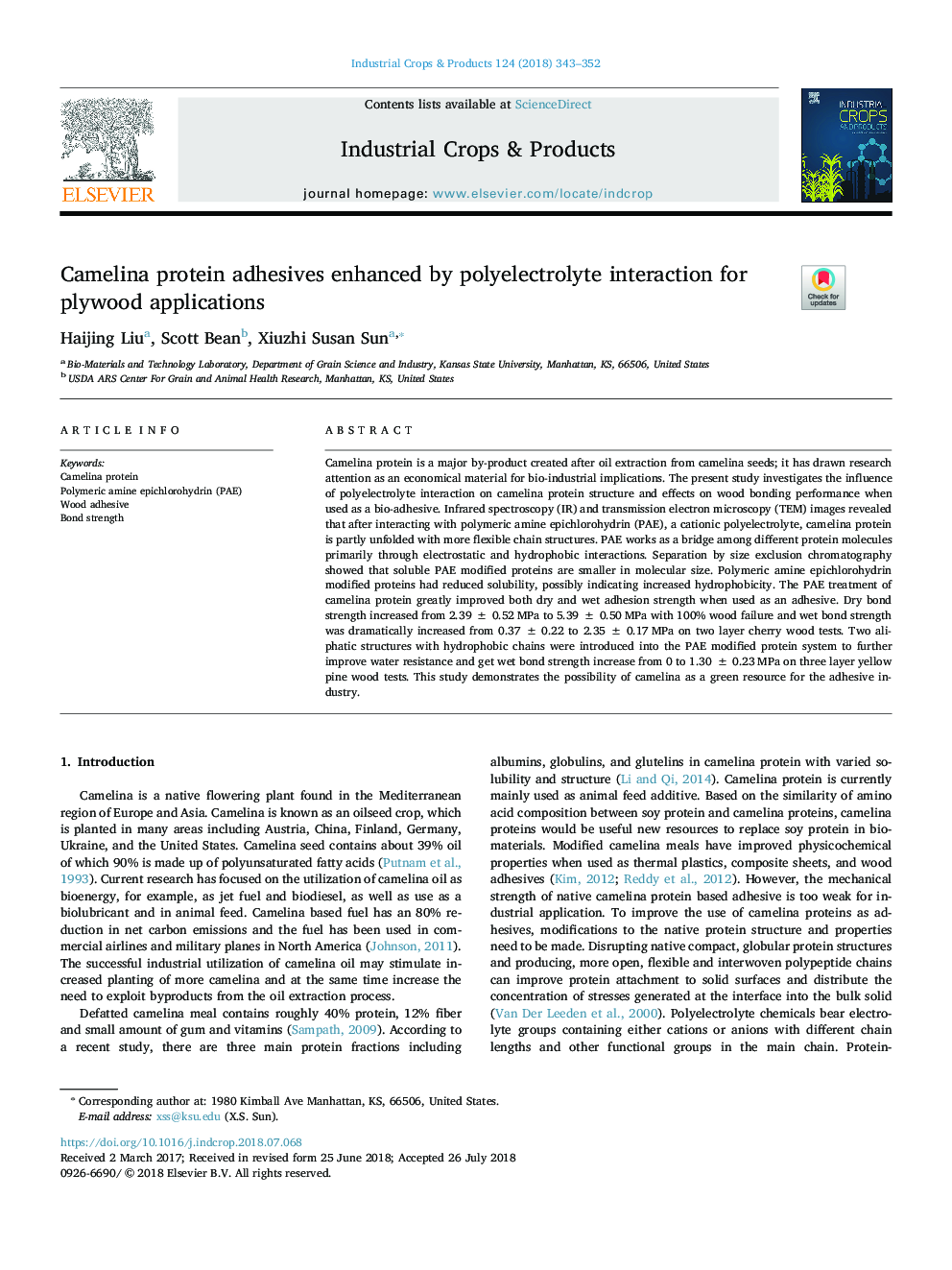| Article ID | Journal | Published Year | Pages | File Type |
|---|---|---|---|---|
| 8879594 | Industrial Crops and Products | 2018 | 10 Pages |
Abstract
Camelina protein is a major by-product created after oil extraction from camelina seeds; it has drawn research attention as an economical material for bio-industrial implications. The present study investigates the influence of polyelectrolyte interaction on camelina protein structure and effects on wood bonding performance when used as a bio-adhesive. Infrared spectroscopy (IR) and transmission electron microscopy (TEM) images revealed that after interacting with polymeric amine epichlorohydrin (PAE), a cationic polyelectrolyte, camelina protein is partly unfolded with more flexible chain structures. PAE works as a bridge among different protein molecules primarily through electrostatic and hydrophobic interactions. Separation by size exclusion chromatography showed that soluble PAE modified proteins are smaller in molecular size. Polymeric amine epichlorohydrin modified proteins had reduced solubility, possibly indicating increased hydrophobicity. The PAE treatment of camelina protein greatly improved both dry and wet adhesion strength when used as an adhesive. Dry bond strength increased from 2.39â±â0.52âMPa to 5.39â±â0.50âMPa with 100% wood failure and wet bond strength was dramatically increased from 0.37â±â0.22 to 2.35â±â0.17âMPa on two layer cherry wood tests. Two aliphatic structures with hydrophobic chains were introduced into the PAE modified protein system to further improve water resistance and get wet bond strength increase from 0 to 1.30â±â0.23âMPa on three layer yellow pine wood tests. This study demonstrates the possibility of camelina as a green resource for the adhesive industry.
Keywords
Related Topics
Life Sciences
Agricultural and Biological Sciences
Agronomy and Crop Science
Authors
Haijing Liu, Scott Bean, Xiuzhi Susan Sun,
